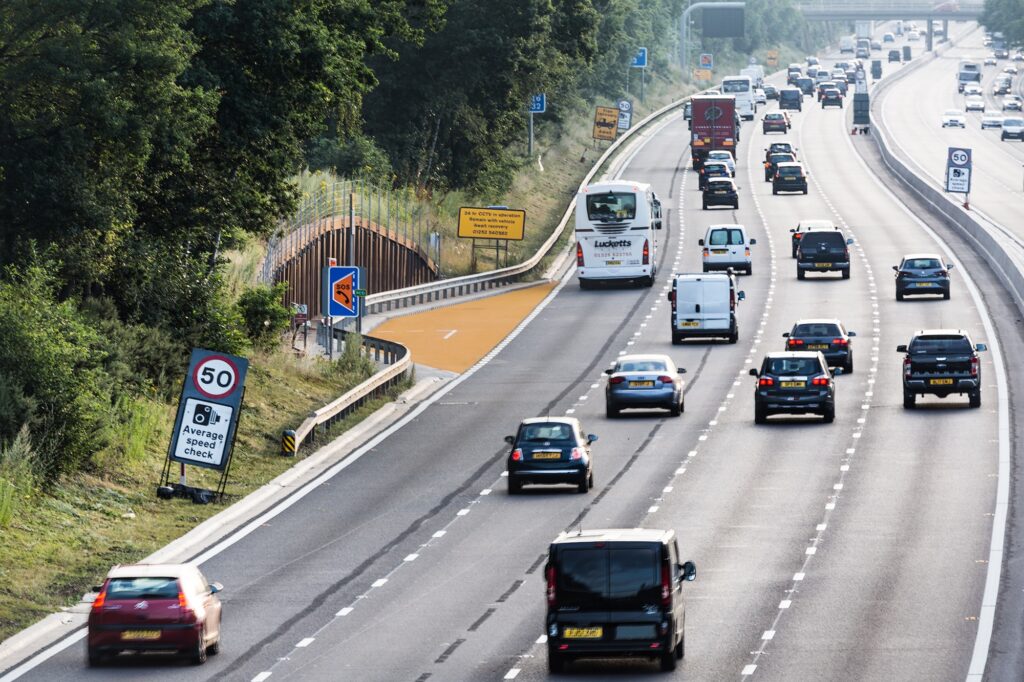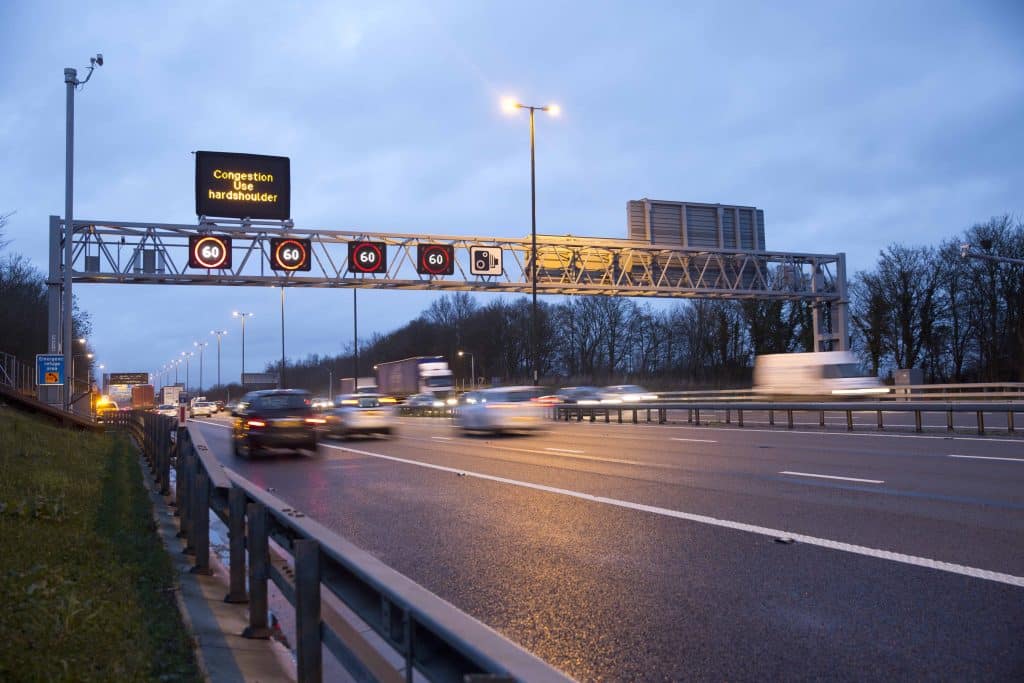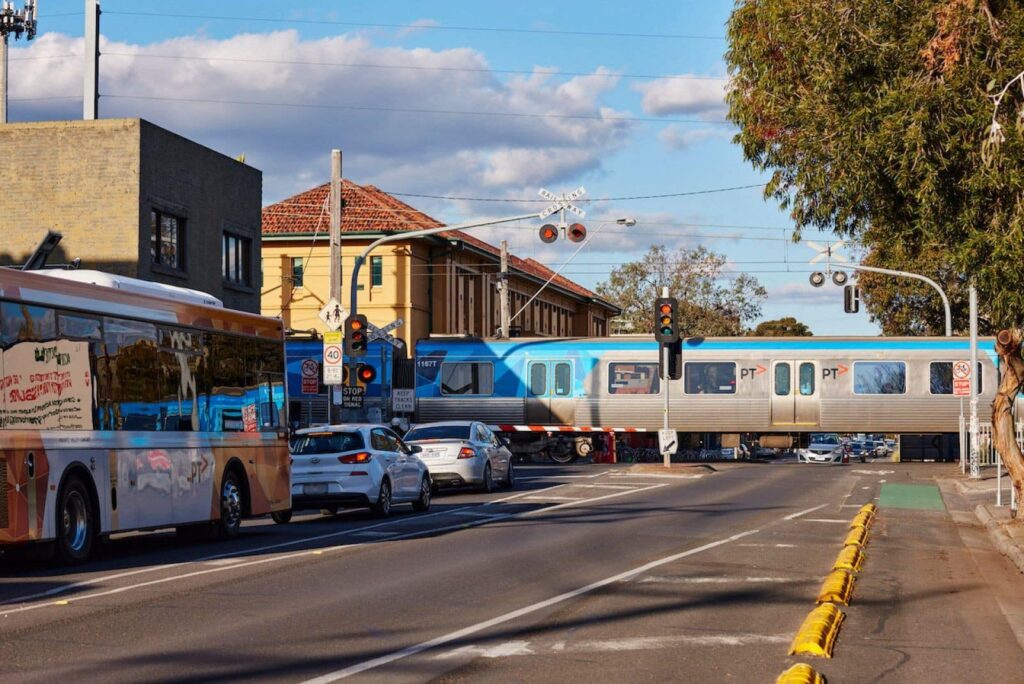National Highways to construct additional emergency refuge areas on 11 smart motorways

This post was originally published on this site

National Highways is set to upgrade 11 more sections of smart motorway with extra places to stop in an emergency.
Earlier this year, the government cancelled plans for any new smart motorways, due to cost pressures and the lack of driver confidence.
A further 11 locations have now been announced for additional emergency refuge areas on existing and under-construction smart motorways. They include sections of the M1, M3, M4, M5, M6, M20, M25 and M27.
This was an outcome from the 2021 Transport Select Committee inquiry into smart motorways, which concluded that the refuge areas on All Lane Running (ALR) smart motorways were too far apart. National Highways committed to upgrading all ALR motorways to ensure that the refuge areas are a 1km apart where possible and up to 1.5km apart as a maximum.
On the upgrade of the M6 between junction 21a and junction 26 between Warrington and Wigan, for example, National Highways will double the number of emergency areas. The original plan was for 10 emergency areas along the upgraded stretch of motorway but the project team has now been given the green light to add up to a dozen more.
Overall, the roads operator has committed to build more than 150 additional emergency areas on ALR motorways across the country by 2025, part of a £900M investment in further safety improvements on existing smart motorways.
11 locations for additional refuge areas
- M1 junctions 16 to 19 in Northamptonshire
- M1 junctions 23a to 25 in Leicestershire & Nottinghamshire
- M1 junctions 28 to 30 in Derbyshire
- M1 junctions 30 to 31 in Derbyshire
- M3 junctions 2 to 4a in Surrey & Hampshire
- M4 junctions 10 to 12 in Berkshire
- M5 junctions 4a to 6 in Worcestershire
- M6 junctions 21a to 26 in Cheshire
- M20 junctions 3 to 5 in Kent
- M25 junctions 5 to 7 in Surrey & Kent
- M27 junctions 4 to 11 in Hampshire
Smart motorways have been a controversial addition to the SRN with many drivers believing they are less safe than traditional motorways with hard shoulders, despite National Highways data saying they are “our safest roads”.
Following the 2021 review by the Transport Select Committee, in January 2022 it was agreed by National Highways and the Department for Transport (DfT) that the roll out of new ALR smart motorways would be paused until five years of data had been collected.
This did not entirely appease critics of smart motorways and following pressure from the public and groups such as the AA and RAC, in April the DfT confirmed that the £1bn smart motorways programme would be scrapped. Despite this, existing smart motorways would continue to be utilised and all under-construction smart motorway conversions would continue.
An additional five emergency areas have already been added on the M6 in Staffordshire and a further eight on the M1 in Bedfordshire and Northamptonshire, while the motorway upgrades were in construction.
In June, work began on more than doubling the number of emergency areas on the M1 in South Yorkshire between junctions 32 and 35a.
The announcement of the 11 additional refuge areas comes as National Highways publishes its Smart motorways stocktake third year progress report.
In the report, National Highways confirmed it has now delivered all the actions set out in the March 2020 Smart Motorway Safety Evidence and Action Plan due to have been completed by this point. This includes achieving the national average 10-minute attendance time for traffic officers on ALR motorways where emergency areas are more than a mile apart.
In addition to the stocktake actions, National Highways is also investing £105M to further improve operational technology on ALR smart motorways. Key upgrades to improve the performance of technology to detect stopped vehicles on motorways without a permanent hard shoulder have already been completed.
National Highways chief executive Nick Harris said: “Safety is our highest priority and we are committed to further improving all lane running motorways.
“We have completed key upgrades to improve the performance of technology to detect stopped vehicles, and today we have set out the next sections of motorway to benefit from the programme to install more than 150 extra emergency areas to give drivers added reassurance. We are also continuing to invest £105M to improve the resilience of our operational technology systems.”
Like what you’ve read? To receive New Civil Engineer’s daily and weekly newsletters click here.





Responses